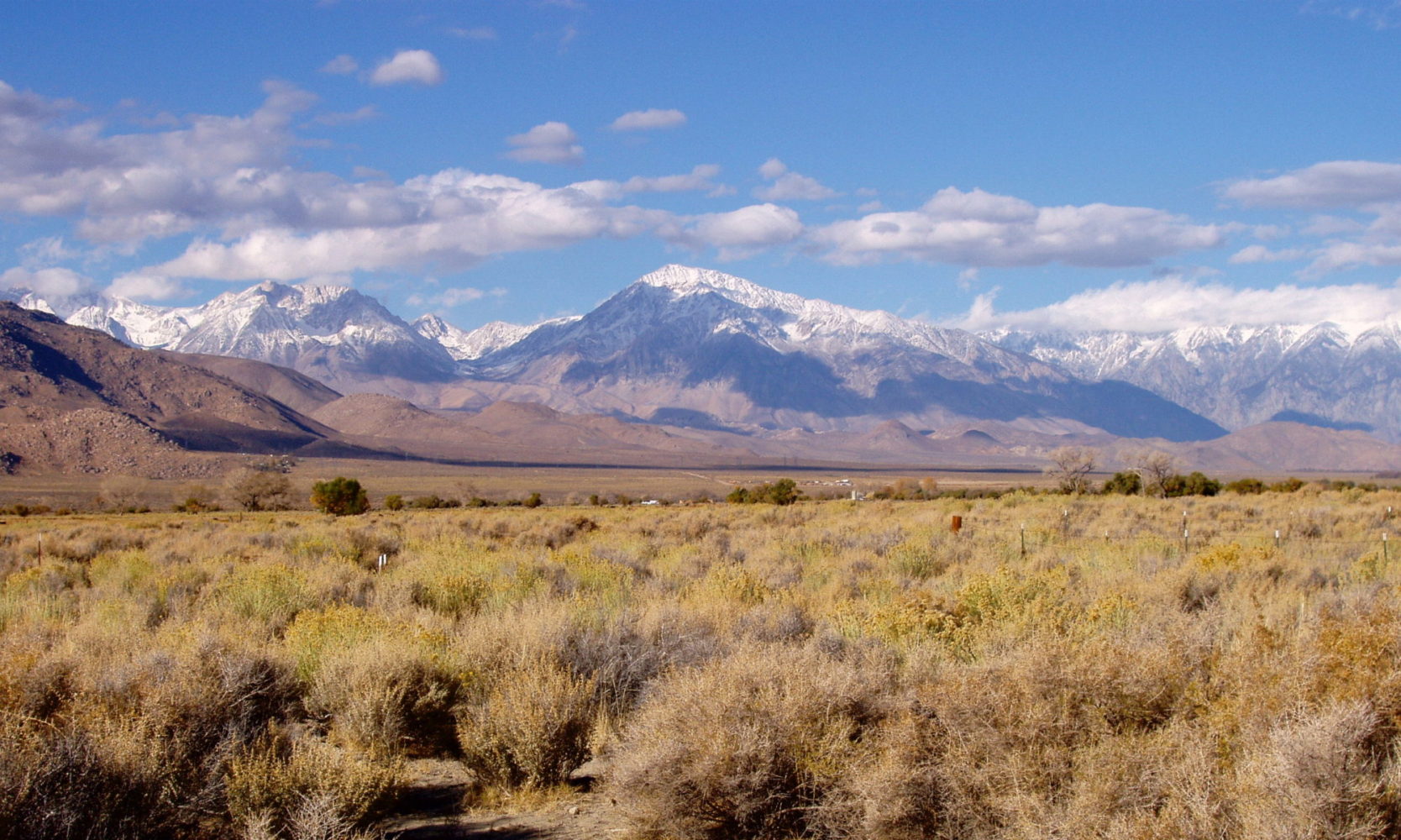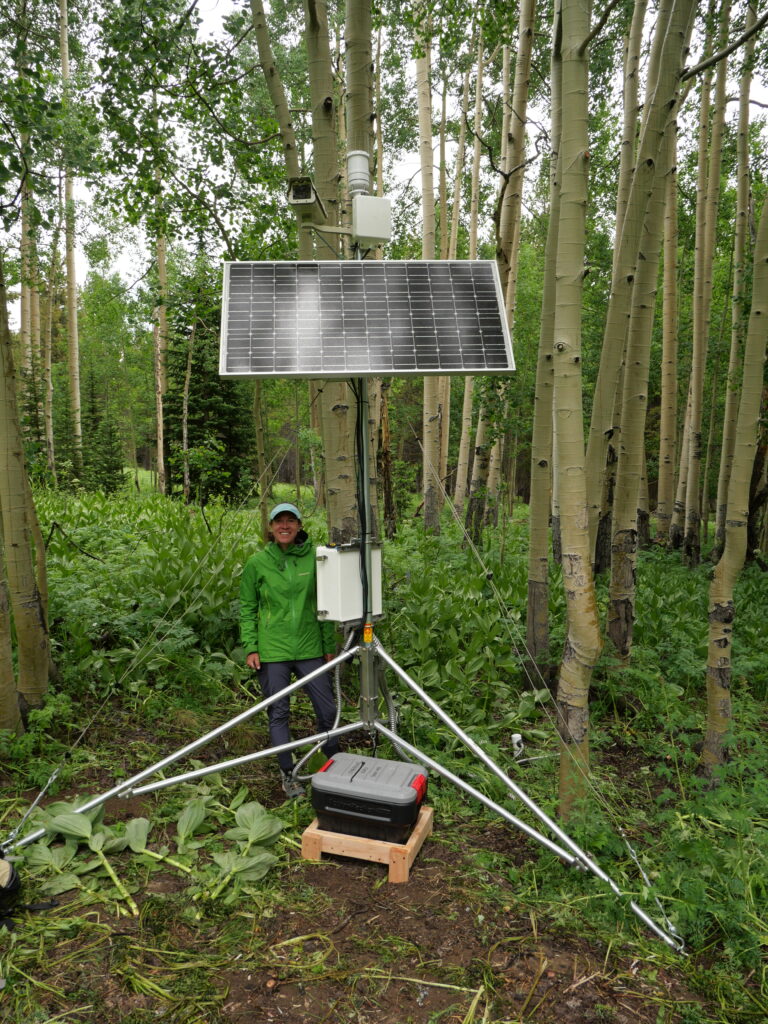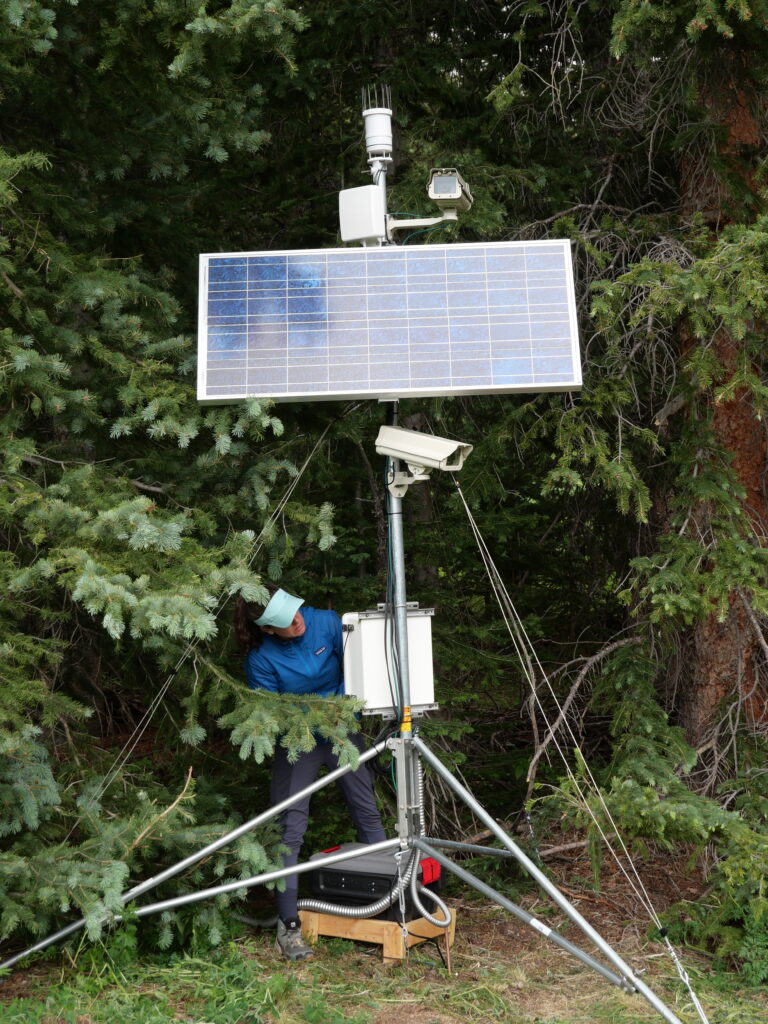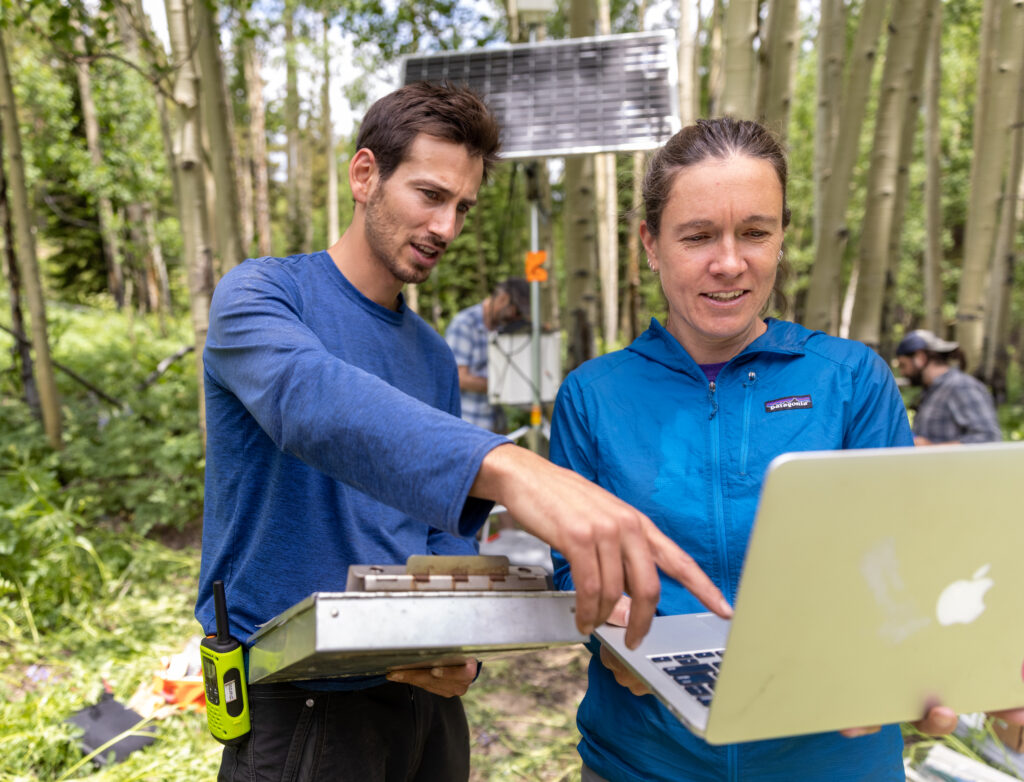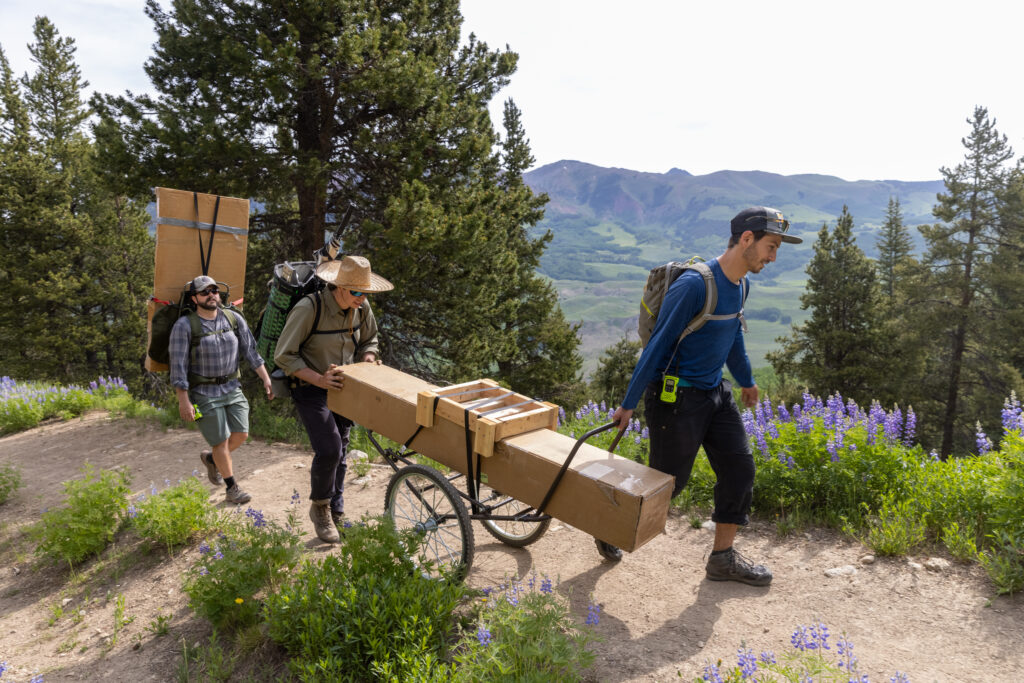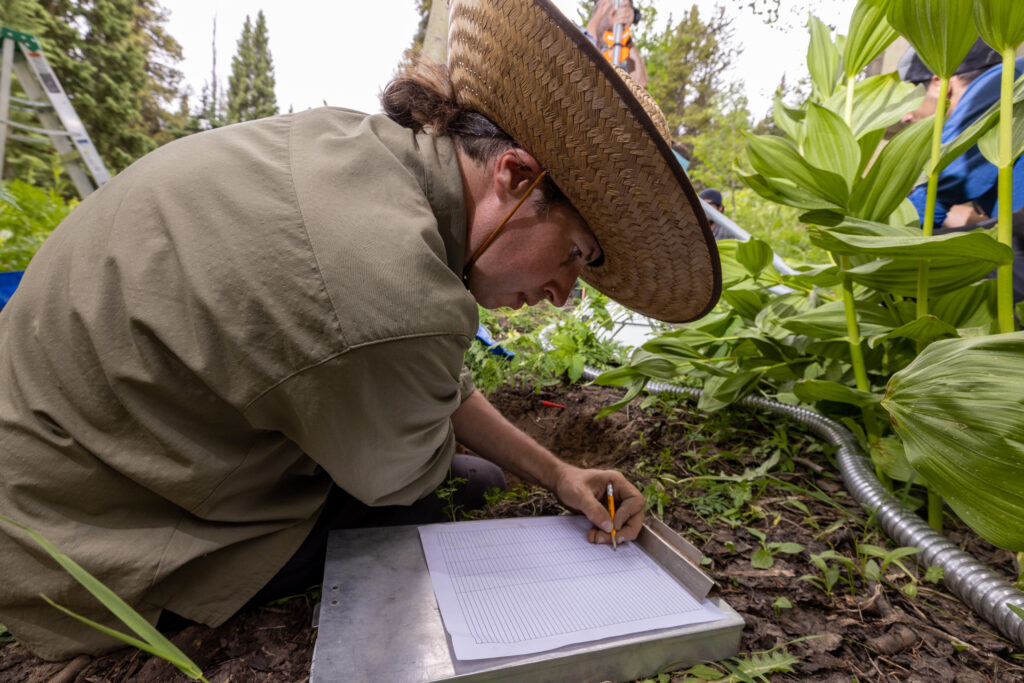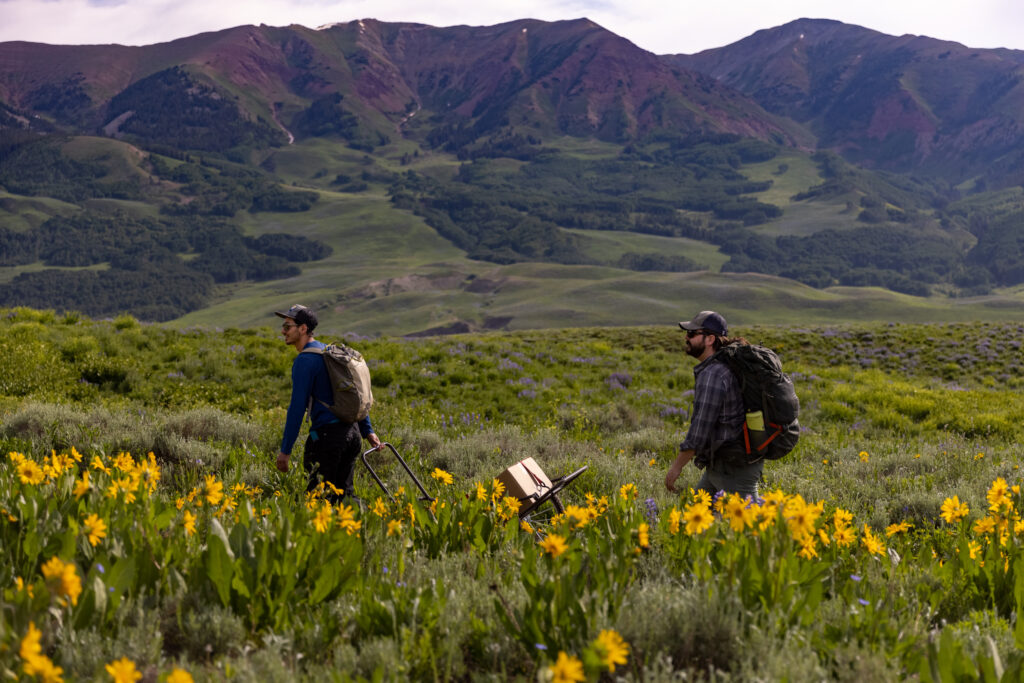Winter is changing in the western US mountains. There is less snowfall, snow is melting earlier in the spring, and the warm summers are becoming longer. These changes in winter and water availability impact forests. Belowground in the forest soil, microorganisms break down organic matter, releasing CO2, an important greenhouse gas that is warming Earth. Plant roots produce CO2 also, via their metabolism. Our research seeks to understand how changes in winter snowpack influence the amount of CO2 produced in soils in the East River watershed, near Crested Butte, Colorado.
We are quantifying the production of CO2 by microorganisms and plant roots across different elevations and seasons. We work in the two main forest types of the region, evergreen spruce/fir and deciduous aspen, applying unique experimental measurements. We are making use of existing long-term measurements to understand how past changes in snow amount and duration of cover have affected soil CO2. Information gathered from our experimental work and data analyses is being used to improve predictions of soil CO2 produced in the future using models. Our proposed work is motivated by the hypothesis that changing winter snow amounts will impact how microorganisms and roots function separately, and thus understanding these influences is necessary to predict how the ecosystems will respond to future climate. This project is funded by DOE.
